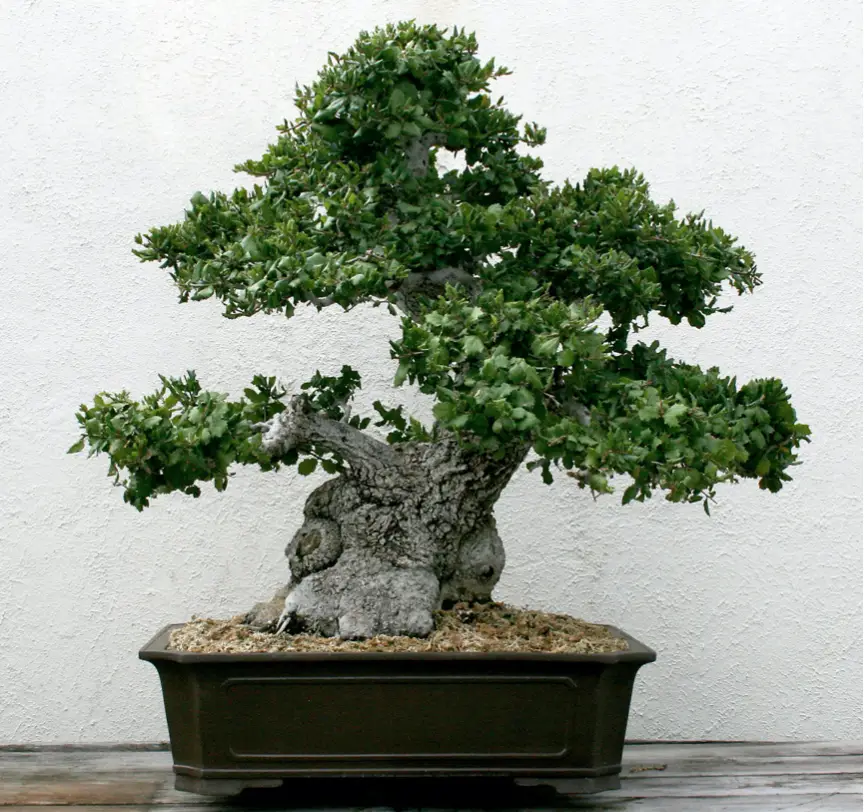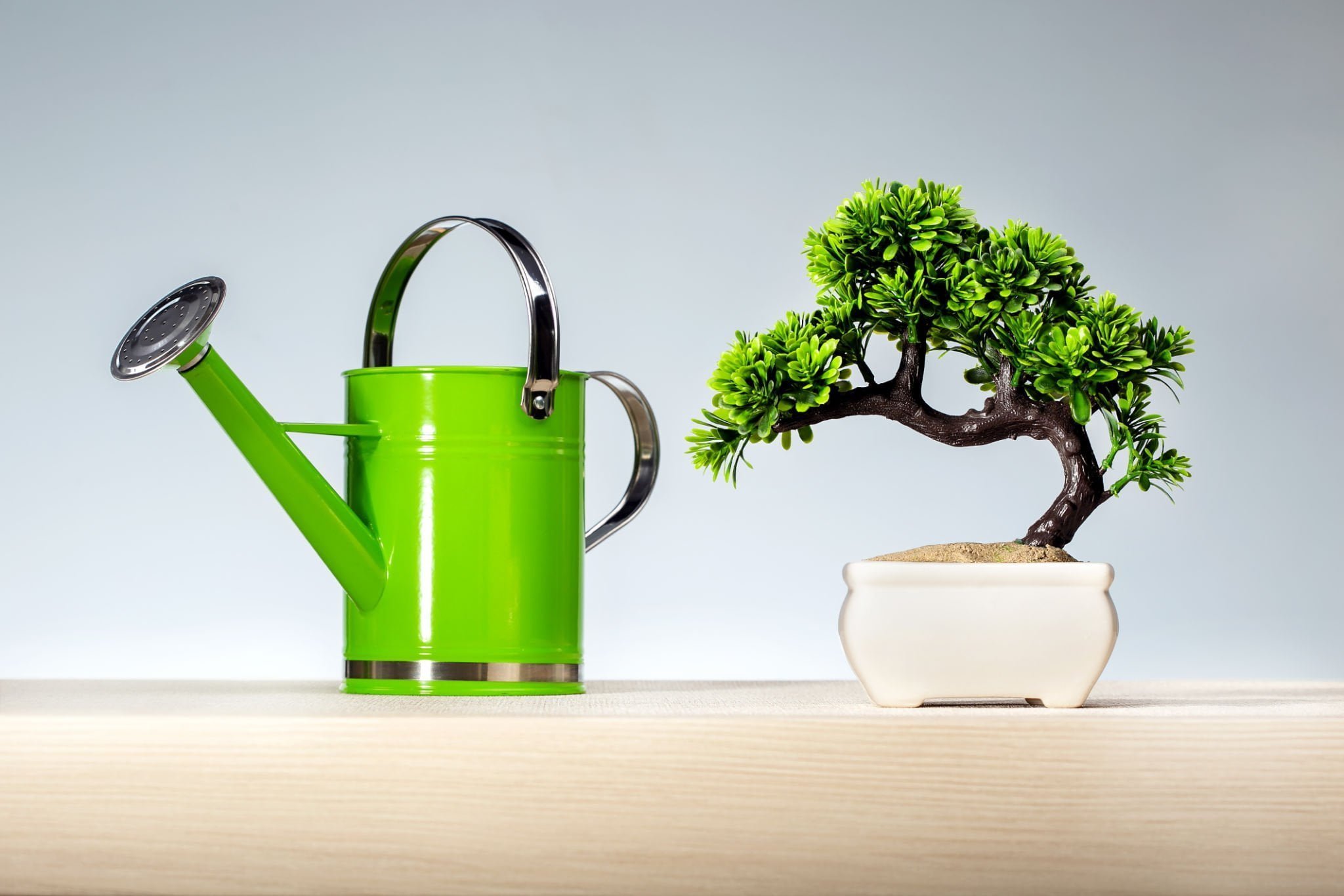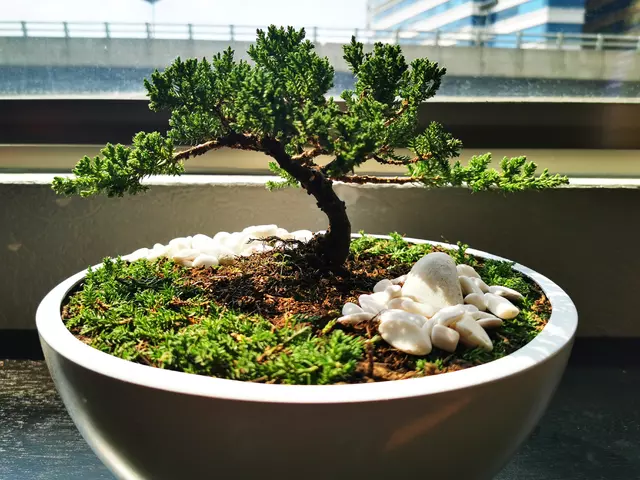Table of Contents
When it comes to bonsai trees, finding the best soil is crucial. Soil for bonsai trees isn’t just dirt; it’s a carefully balanced mix that ensures healthy growth and long-lasting beauty. Ever wondered why some bonsai thrive while others wither? It all comes down to the right soil mix.
Here’s the deal: Akadama percentages play a vital role. This Japanese clay retains water but also allows for good drainage, which is essential for roots to breathe. Mixing in pumice and lava rock boosts aeration and prevents soil from getting too compact.
Want your bonsai to flourish? It starts with the right soil.
Soil for Bonsai Trees: Mixing It Up for Perfect Growth
Let’s dive into the nitty-gritty of soil mixes for refined bonsai trees.
Conifer vs Deciduous: The Akadama Game
For conifers:
- Aim for 30% – 60% akadama
- Great for species like black pine, coast redwood, cryptomeria, and hinoki
For deciduous trees:
- Go for 50% – 80% akadama
- Perfect for Japanese maple, wisteria, and other broadleaf beauties
But here’s the kicker – you’ve got to tweak these percentages based on what your tree needs.
When to Dial Back the Akadama:
- Got a sick tree? Less akadama
- Worried about overwatering? Less akadama
When to Crank Up the Akadama:
- Want slower growth or shorter internodes? More akadama
- Tree prone to underwatering? More akadama
The Other Half: Pumice and Lava Rock
For the non-akadama bit, straight pumice works wonders. Sometimes, a mix of pumice and lava rock does the trick.
Now, you might hear folks argue about pumice vs lava rock. Truth is, there’s not enough difference to get worked up about.
Why? Well, volcanic soils are as varied as your gran’s cookie recipes. Colour, shape, density – it all changes from mine to mine.
Take Japanese pumice – it’s yellow and smooth. North American stuff? White and bumpy.
But here’s the real talk: trees don’t seem to care much either way.
The Japanese have been growing killer bonsai with their local pumice for yonks.
So, what’s the takeaway for your soil for bonsai?
Mix it up, keep an eye on your tree, and adjust as needed. It’s not rocket science, but it is an art.
Remember, every bonsai – from your ficus to your coast live oak – has its own quirks. Get to know your tree, and you’ll nail the perfect soil mix in no time.
Soil for bonsai isn’t just dirt – it’s the foundation for bonsai brilliance.

Pre-Bonsai Soil Mix
When it comes to pre-bonsai soil, the mix you use for seedlings, cuttings, or young trees isn’t as critical as it is for mature bonsai. The soil will be changed multiple times before the trees find their permanent pots.
Straight perlite or perlite mixed with peat moss, coir, or other organic ingredients is brilliant for rooting cuttings or sprouting seeds.
For young trees, pumice mixed with organic mulches works well. Some have seen great results with a 1:1 mix of pumice and lava rock, or even using 100% lava rock, inspired by successful Japanese gardens.
For trees collected from gardens or mountains, a mix of 100% pumice is favoured. It’s lightweight and moisture content can be controlled by adjusting the particle size—smaller particles hold more moisture, larger ones hold less.
Akadama-based premixes are sometimes used, but typically no more than 30% akadama for conifers or 50% for deciduous trees. Too much akadama can slow growth, and faster growth is often desired in the early stages.
Finding the right soil for bonsai trees during these early stages sets the foundation for thriving, beautiful trees.

Tropical Bonsai Soil Mix
In the case of tropical bonsai, finding the right soil mix can make all the difference. Different environments across the country mean there’s no one-size-fits-all solution. The key lies in understanding the diverse conditions these trees thrive in.
Tropical bonsai often find themselves indoors, where temperature and humidity levels fluctuate. Generally, higher temperatures and humidity create ideal conditions for their health and growth.
For my tropical bonsai, I typically aim for a mix of 30% to 50% akadama, with the rest being pumice and/or lava rock. Adjusting these proportions is key: less akadama if the soil stays too moist, more if I need better moisture retention.
Admittedly, my experience leans more towards temperate trees. If this approach doesn’t yield the results you’re after, it might be worth consulting other local tropical bonsai enthusiasts and experimenting until you find what works best for you.

Broadleaf Evergreen Bonsai Soil Mix
Broadleaf evergreen bonsai trees encompass a wide array of species, from native varieties like live oaks and Yaupon holly to more exotic options such as eleagnus and privet, as well as subtropical beauties like gardenia.
In my experience, treating broadleaf evergreens similarly to deciduous species is generally effective, though there can be exceptions depending on the specific species you’re cultivating.
For instance, when dealing with unhealthy live oaks, I’ve found that drier soil mixes with higher percentages of pumice can greatly benefit their recovery. As the trees regain health, adjusting the mix to include more akadama helps maintain their optimal condition.
Key to this process is observing signs of over- or underwatering, which serves as a reliable guide for tweaking your basic soil mixes until you discover the perfect balance that suits your trees best.

Azalea Bonsai Soil Mix
For azaleas like Satsuki azaleas have a straightforward preference: 100% kanuma. Whether you’re nurturing cuttings, young trees, or refined specimens, this Japanese soil does the trick.
While other mixes might work, I’ve found that sticking to 100% kanuma makes it easiest to keep azaleas thriving.

Exceptions to the Rule
When diving into the world of bonsai, it’s easy to get lost in the details of soil composition. Soil for bonsai trees isn’t one-size-fits-all, especially when it comes to some notable exceptions that can make or break your bonsai game. Here’s what you need to know:
- Coast redwoods are a bit finicky—they can thrive in 30% akadama mixes, but they tend to dry out quickly. To keep them happy, bumping up the akadama content to 50% or more can work wonders. For pre-bonsai, I lean towards 30% to 50% akadama mixes, while more refined specimens benefit from 50% to 80% akadama mixes.
- Cryptomeria and hinoki bonsai also appreciate higher akadama mixes. This tweak helps them maintain the right balance of moisture and aeration, ensuring robust growth.
- Higher akadama mixes aren’t just for show—they’re practical too. In rock plantings or setups where repotting is less frequent, such as forest plantings, a higher akadama content (think 50% to 80%) allows roots ample room to grow over extended periods without needing fresh soil.
- Now, about those 100% akadama mixes: while they’re trendy for some species, practical benefits over mixes of 50% to 80% akadama aren’t always clear. In cooler climates where soil moisture retention is less of an issue, these mixes can actually slow down growth as the akadama breaks down and holds even more moisture.
Understanding these exceptions helps you tailor your bonsai soil mix precisely to your tree’s needs, ensuring it thrives for years to come.

Is Finding the Right Soil For Bonsai Trees Really That Hard?
So, you’ve got a lone tree in your collection, and you’re wondering if nailing the perfect soil mix is worth the hassle? Here’s the scoop: You can make almost any soil for bonsai trees to work if you’re cautious with watering and stick to repotting every 2-3 years.
But what if you’re aiming for refinement? These tips might just be your springboard to experimenting with different soils in your garden.











4 responses to “Best soil for bonsai trees”
[…] more details? Check out the Bonsai soil mixtures […]
[…] For more on Bonsai soil, check out the Bonsai soil article. […]
[…] you wondering how to grow and care for your Ginseng Ficus bonsai? The right soil mix is crucial. Alex Homrmozi breaks it […]
[…] for commercially available bonsai soils containing akadama, pumice, organic compost, and fine […]